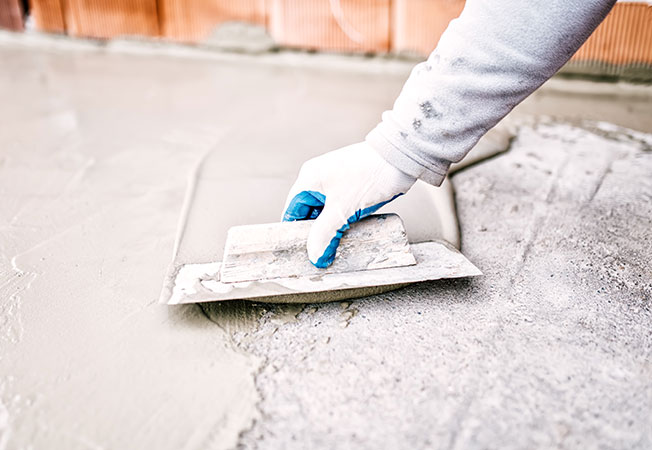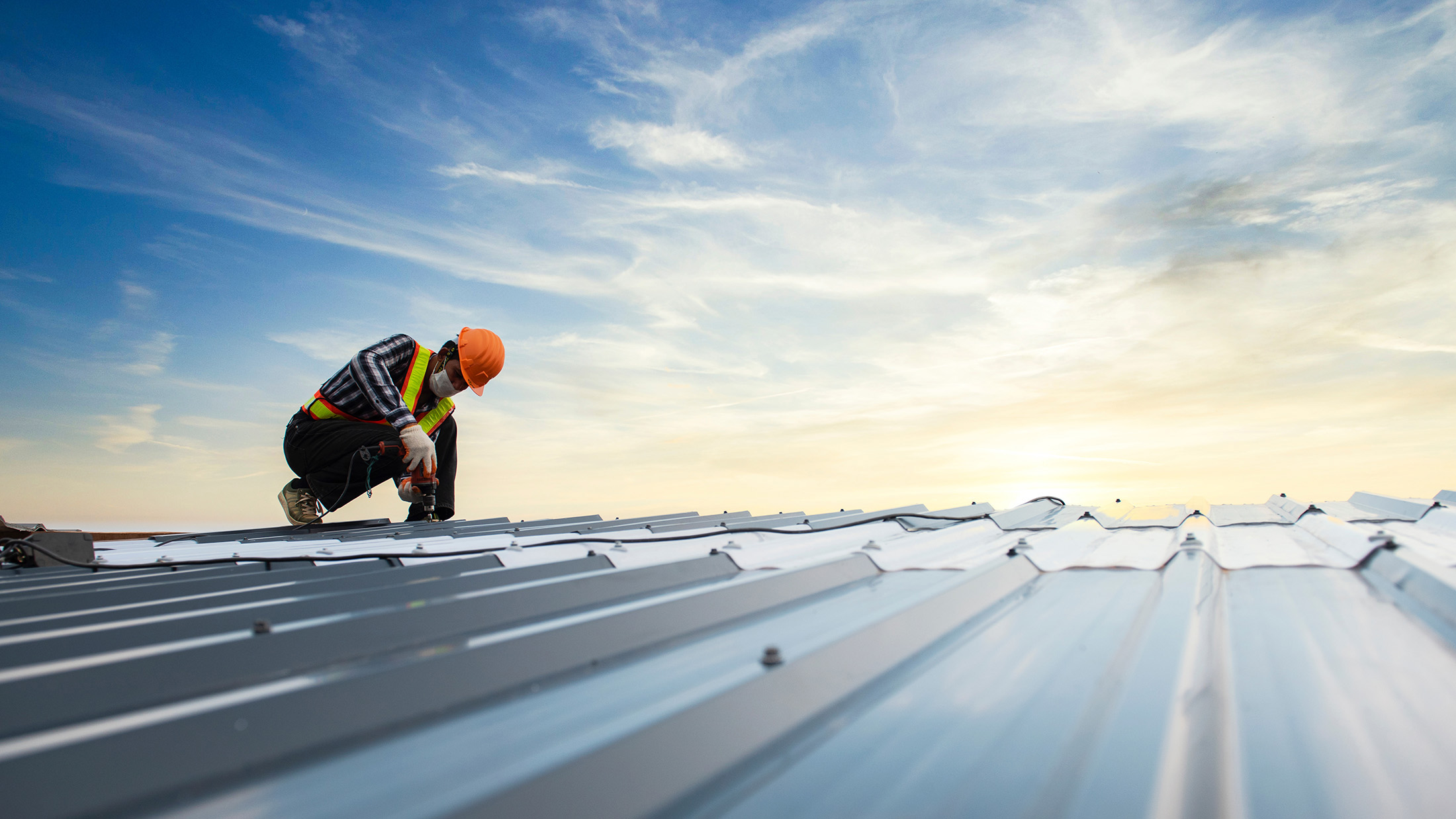Why Waterproofing Is Crucial for Durable Frameworks: an Extensive Analysis
Waterproofing plays a necessary function in the durability of structures. It functions as a barrier against wetness, which can bring about considerable problems like mold and mildew and degeneration. Understanding the numerous waterproofing methods and their ramifications is vital for homeowner. The effects of overlooking this aspect can be severe. Exploring these aspects exposes not just the requirement of waterproofing, however likewise its broader effect on home worth and safety and security.
Comprehending Waterproofing: Meaning and Value
Waterproofing works as an essential obstacle versus dampness invasion, securing structures from possible damage. It incorporates numerous approaches and materials made to stop water infiltration right into structures, making certain longevity and functionality. The relevance of waterproofing can not be overstated, as it safeguards against a series of problems, including mold and mildew development, damage of products, and architectural weakening.Effective waterproofing options can consist of membranes, coverings, and sealers, each customized to details environments and structural layouts. By developing a safety layer, these solutions assist maintain a completely dry interior, which is critical for the health of passengers and the preservation of home value.Moreover, buying waterproofing at the building stage is significantly more economical than dealing with water-related problems after they occur. Recognizing the principles of waterproofing is critical for designers, builders, and home owners intending for durable, resistant frameworks that endure the test of time and environmental difficulties.

The Effect of Water Damage on Architectural Integrity
Water damage poses substantial threats to structural honesty, largely through the growth of mold and mildew and mildew. These microorganisms not only compromise interior air quality however additionally result in product deterioration over time. In addition, extended exposure to moisture can compromise architectural components, increasing the probability of collapse or failure.
Mold and Mildew Growth
Wetness breach postures a considerable threat to the architectural stability of structures, causing the proliferation of mold and mildew and mold. These fungi thrive in wet settings, typically taking origin in covert locations such as wall tooth cavities, under flooring, and in ceilings. Their growth not only creates unsightly discolorations and unpleasant smells but additionally adds to a decrease in indoor air top quality, presenting wellness dangers to passengers. Mold and mildew and mildew can compromise products like wood and drywall, bring about additional wetness retention and developing a cycle of damage. Early detection and remediation are vital to prevent substantial development, highlighting the necessity of reliable waterproofing measures. Attending to wetness concerns promptly can shield both the health and wellness of citizens and the longevity of the framework.
Structural Weakening Threats
Unchecked wetness breach can cause extreme structural weakening, jeopardizing the honesty of structures. Water damage frequently affects fundamental elements, such as beams, columns, and walls, leading to endangered load-bearing ability. Extended exposure to wetness can trigger materials like timber to rot and steel to wear away, compromising their structural residential or commercial properties. This wear and tear might cause cracks, bowing, or perhaps tragic failures if left unaddressed. Sump pump discharge drainage Omaha. In addition, water infiltration can weaken the dirt beneath structures, triggering settling or changing that additional exacerbates structural risks. Because of this, applying reliable waterproofing solutions is critical in protecting a structure's structural honesty, preventing costly fixings, and ensuring security for owners. Correct maintenance and proactive actions are crucial in alleviating these substantial dangers connected with water damages
Kinds Of Waterproofing Techniques and Materials
Waterproofing techniques and materials play a crucial duty in shielding frameworks from water damage. Key strategies consist of membrane layer waterproofing, which offers a physical barrier; fluid waterproofing options that form a smooth layer; and cementitious waterproofing options understood for their resilience and convenience of application. Understanding these numerous methods is necessary for picking one of the most suitable method for specific building and construction requirements.
Membrane Layer Waterproofing Techniques
Membrane layer waterproofing strategies are essential for shielding frameworks from the destructive results of water infiltration. These techniques entail the application of waterproof membranes that develop a barrier against moisture. The two key sorts of membrane layer systems are sheet membrane layers and liquid-applied membrane layers. Sheet membrane layers, usually made from products such as rubberized asphalt or polycarbonate, are upraised and can be presented and abided by surfaces. In contrast, liquid-applied membrane layers are used as a fluid and remedy to develop a seamless layer. Both types offer adaptability and sturdiness, dealing with different applications, including roofs, cellars, and foundations. Proper setup and upkeep of these membranes assure lasting security, boosting the life-span and stability of the structures they guard.
Fluid Waterproofing Solutions
Liquid waterproofing services stand for a functional option to conventional membrane systems. These options typically involve the application of fluid coverings that heal to develop a seamless, long lasting barrier versus water infiltration. Different sorts of fluid waterproofing products are offered, consisting of polyurethane, bitumen, and acrylic-based formulations. Each type uses unique properties, such as versatility, attachment, and UV resistance, making them ideal for diverse applications. The application process commonly includes spraying or rolling the liquid onto surfaces, enabling protection of complex shapes and details, which reduces potential weak factors. Fluid waterproofing services are specifically beneficial for areas with activity, such as joints and splits, as they can suit structural shifts without jeopardizing stability, guaranteeing resilient defense for frameworks.
Cementitious Waterproofing Options
Many cementitious waterproofing alternatives are readily available, providing reliable services for numerous building and construction needs. These systems typically contain a blend of concrete, sand, and ingredients, making them ideal for both exterior and interior applications. Amongst the prominent selections are crystalline waterproofing products, which react my company with wetness to develop a waterproof obstacle within the concrete matrix. Furthermore, adaptable cementitious finishings give boosted elasticity, suiting small structural motions without endangering the waterproofing honesty. It is additionally usual to make use of cementitious sealers for joints and splits, making certain extensive security versus water infiltration. Overall, cementitious waterproofing alternatives are valued for their longevity, convenience of application, and compatibility with different substratums, making them a preferred choice in modern building techniques.
Long-Term Expense Financial Savings Through Efficient Waterproofing
Buying reliable waterproofing services can significantly lower long-lasting expenses for building proprietors and developers. By avoiding water breach, these options alleviate damages to structural aspects, decreasing the need for pricey repair work and maintenance with time. Waterproofing likewise safeguards interior surfaces and home furnishings, minimizing substitute prices and boosting the general life expectancy of the property.Moreover, reliable waterproofing can cause power cost savings by improving insulation and reducing humidity-related issues. This leads to lower home heating and air conditioning costs, contributing to an extra sustainable economic version for residential or commercial property management.Additionally, the implementation of waterproofing procedures can enhance residential or commercial property worth by making certain a dry, safe, and long lasting atmosphere. While the preliminary investment in waterproofing may seem considerable, the long-term economic advantages far surpass the upfront expenses, making it a prudent decision for anyone entailed in building and construction or home monitoring.

The Duty of Waterproofing in Building Regulations and Laws
Waterproofing plays a significant duty in building regulations and laws, showing its significance in modern-day construction practices. These codes are made to guarantee security, toughness, and sustainability in buildings, emphasizing the requirement for effective waterproofing measures. Different nationwide and regional building regulations detail certain needs for waterproofing materials and strategies, specifically in areas prone to water intrusion, such as basements and foundations.Compliance with these laws not just shields frameworks from moisture-related damage however likewise safeguards public health by stopping mold growth and structural instability. Assessors often evaluate waterproofing aspects throughout the building procedure to ensure adherence to developed standards. As climate modification increases the regularity of extreme climate events, the duty of waterproofing in structure codes is expected to advance, potentially resulting in stricter regulations. Overall, the integration of waterproofing in governing structures underscores its vital role in attaining resilient, resilient structures.
Case Studies: Successful Waterproofing Solutions
Effective waterproofing solutions have actually been carried out across different tasks, showcasing ingenious techniques that improve architectural integrity and longevity. One remarkable instance is the restoration of the historic Smith Tower in Seattle, where innovative membrane layer systems were used to shield the structure from water intrusion. This technique not just maintained the building's visual yet likewise expanded its lifespan.In one more instance, a large business structure in Miami used crystalline waterproofing technology, which reacts with moisture to develop a barrier versus water. This service verified effective versus the city's high moisture and hefty rainfall.Additionally, a bridge in San Francisco undertook an extensive waterproofing therapy using epoxy coatings, which greatly reduced upkeep costs and boosted durability. These study show the performance of customized waterproofing techniques in diverse atmospheres, emphasizing the value of choosing proper methods to address details challenges and guarantee the longevity of structures.
Finest Practices for Implementing Waterproofing Techniques
Applying efficient waterproofing methods calls for cautious preparation and adherence to best techniques - Landscape drainage Omaha. It is essential to conduct an extensive website analysis to identify prospective areas of water access. This assessment educates the selection of suitable materials and methods customized to details environmental conditions. Making use of top quality, resilient waterproofing membranes can considerably enhance protection against moisture.Additionally, correct installment methods are vital; guaranteeing that surface areas are tidy and devoid of pollutants advertises suitable adhesion. Routine upkeep checks should be set up to identify any type of signs of wear or damages, enabling for timely repairs.Moreover, integrating drainage systems can properly take care of water overflow, preventing buildup around frameworks. Recommended Site Educating all personnel associated with building and bathroom waterproofing construction about waterproofing demands more guarantees uniformity and adherence to finest practices. Inevitably, an aggressive method to waterproofing can significantly prolong the lifespan of structures and lower long-term upkeep costs
Often Asked Concerns
How Does Waterproofing Affect Energy Effectiveness in Buildings?
Waterproofing significantly boosts power effectiveness in buildings by stopping wetness invasion. This decreases the demand for heating & cooling, maintains constant indoor temperature levels, and ultimately decreases energy consumption, adding to lasting sustainability and cost savings.
Can Waterproofing Be Applied to Existing Frameworks?
Waterproofing can certainly be related to existing frameworks. Different techniques, such as membranes, finishes, and sealers, enable home proprietors to improve protection against wetness, therefore lengthening the framework's stability and decreasing possible damages gradually.
What Are the Indications of Inadequate Waterproofing?
Indicators of poor waterproofing consist of water stains on wall surfaces, mold development, peeling off paint, moldy odors, and moisture in cellars - French drain installation Omaha. These indicators recommend prospective architectural damages and the need for instant interest to stop additional deterioration
Exactly How Commonly Should Waterproofing Be Checked or Preserved?
Waterproofing needs to be inspected at the very least annually, specifically in regions with hefty rains or ever-changing temperatures. Routine maintenance warranties early discovery of problems, promoting structural honesty and prolonging the life expectancy of the structure.
Are There Eco-Friendly Waterproofing Options Available?
Eco-friendly waterproofing choices are progressively offered, using sustainable materials such as bio-based polymers and natural sealers. These alternatives not only safeguard frameworks but additionally decrease environmental effect, interesting environmentally conscious building contractors and homeowner.